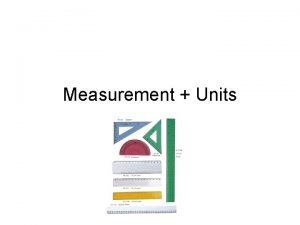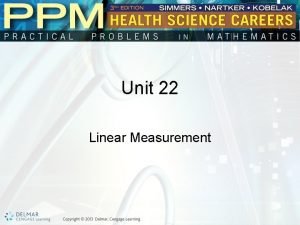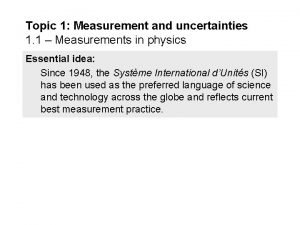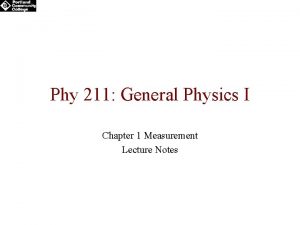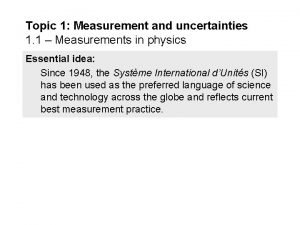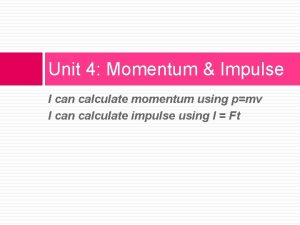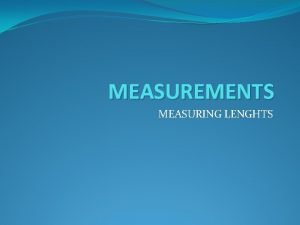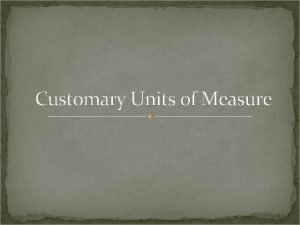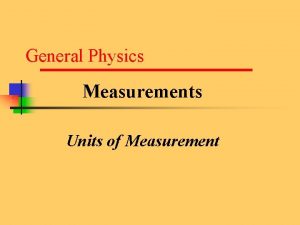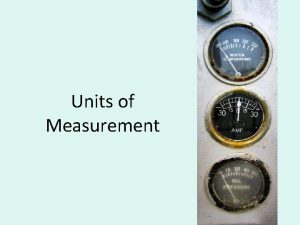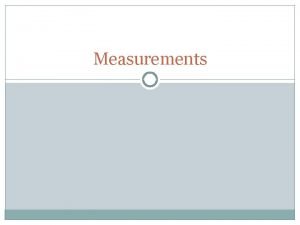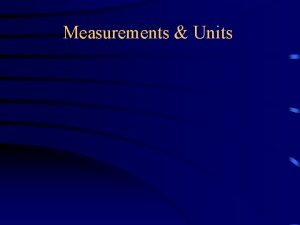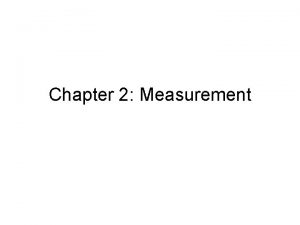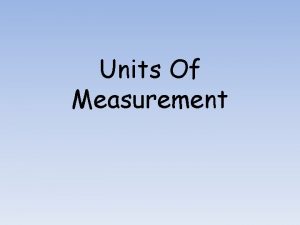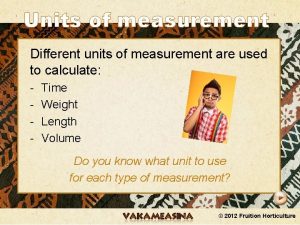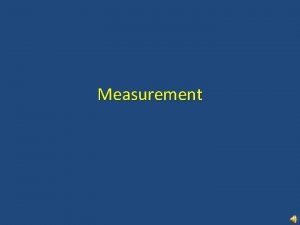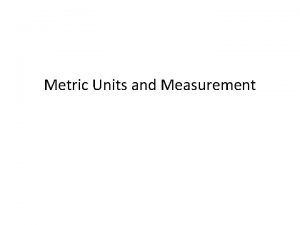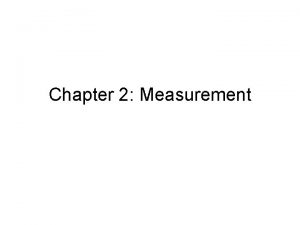Measurement Units Measurements in Physics The most important














- Slides: 14

Measurement + Units

Measurements in Physics • The most important measurements in Physics are Length, mass and time • To make sure everybody in the world can understand each other we all use the same units called SI units (Systeme Internationale)

SI units + Symbols Quantity Length Mass Time Area Volume SI Unit Symbol Other Units used

SI units + Symbols Quantity SI Unit Symbol Other Units used Length Metre m km, cm, mm, Mass Kilogram Kg Gram (g) Time Second S minute (min) Hour (h) Area Square metre m 2 cm 2, km 2 Volume Cubic metre m 3 cm 3, Litre (L)

Measuring lenght • A metre stick or ruler measures straight lines

Opisometer • An opisometer can be used to measure short curved lines for example a road or a river on a map

Trundle Wheel • Used to measure long curved lengths for example around a flower bed

Vernier Callipers • To find the diameter or width of a solid object for example marble or a piece of piping • Click here to see how it works

Learning Check • • What units is length measured in? What units is mass measured in? What units is time measured in? How would you find the length of a short curved line? • How would you find the distance from here to the shop?

Measuring Area • Area is how much space something covers • A book has a smaller area than a field • To get the area of a regular shape (a square or a rectangle) multiply the length by the width • Remember Area = L X W • Area is measured in metres squared m 2 (or cm 2 , km 2 or mm 2)

Measuring the area of an irregular object • Your hand or a leaf does not have a regular shape • To get the area of an irregular object trace it onto graph paper and count how many squares it covers, each square has an area of 1 mm 2

Mass • Mass is the amount of matter in an object • It is measured in the lab using an Electronic balance • Usually measured in Kg or g

Measuring Volume • Volume tells you how much space something takes up • It is measured in m 3 (or cm 3, ml or litres) • For a regular object such as a cardboard box Volume = Length X width X Height

Measuring volume of irregularly shaped objects • A stone or a potato does not have straight edges, it is irregular • We can measure the volume of irregular objects using a graduated cylinder and/or an overflow can
 Opisometer is used to measure
Opisometer is used to measure Derived quantity
Derived quantity Newspaper article format
Newspaper article format Inverted pyramid in news writing
Inverted pyramid in news writing Least important to most important
Least important to most important English linear measurements
English linear measurements Measurement topic
Measurement topic General physics 1 measurements
General physics 1 measurements General physics 1 measurements
General physics 1 measurements Measurements in physics
Measurements in physics Customary units of measurement
Customary units of measurement Momentum units of measurement
Momentum units of measurement Customary system
Customary system Appropriate metric unit of typical room height
Appropriate metric unit of typical room height Us customary system
Us customary system
